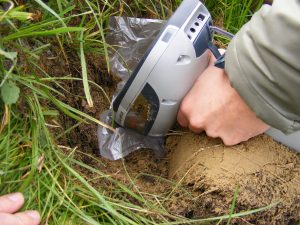
Project title: „LOKKOCK” Development of novel soil testing methods in support of site-specific risk assessment
Funding Programme: Economic Competitiveness Operative Programme (GVOP)
Project Identification Number: GVOP-3.11-2004-05-0257/3.0
Project duration: 01. 01. 2005. – 31. 12. 2007.
Project type: Consortial
Project partners:
Budapest University of Technology and Economics (BME) (Lead partner)
Research Institute for Soil Science and Agricultural Chemistry of the Hungarian Academy of Sciences (RISSAC)
Cyclolab Cyclodextrin Research and Development Ltd (CYCLOLAB)
Summary „LOKKOCK” Development of novel soil testing methods in support of site-specific risk assessment
The Project was focused on the development of innovative soil testing methods that support site-specific risk assessment of polluted sites.
The main aim of the work was to develop and apply physico-chemical analyses, biological and ecotoxicity testing methods to soil, DNA soil testing procedures and to forecast the ecological effects of the contaminant in the soil and to determine the site-specific quantitative risk.
The integrated use of the developed methods assisted in mapping of polluted areas, forecasting and measuring the ecological effect and site-specific risk of the contaminants, providing data on the pollution, bioavailability, contaminant mobility, bioaccumulation and food chain effects.
Therefore, the developed integrated methodology and the related risk assessment procedure was able to support environmental decision making in environmental risk management.
Three complementary test methods were developed and implemented:
- Physical-chemical methods for quantitative and qualitative determination and characterisation of toxic metals and organic contaminants, determination of partition and contaminant transport.
- Biological and DNA techniques for Qualitative and Quantitative characterisation of the members of the ecosystem.
- Direct soil contact and DNA toxicological tests to measure the effect of the contaminated environmental samples.



